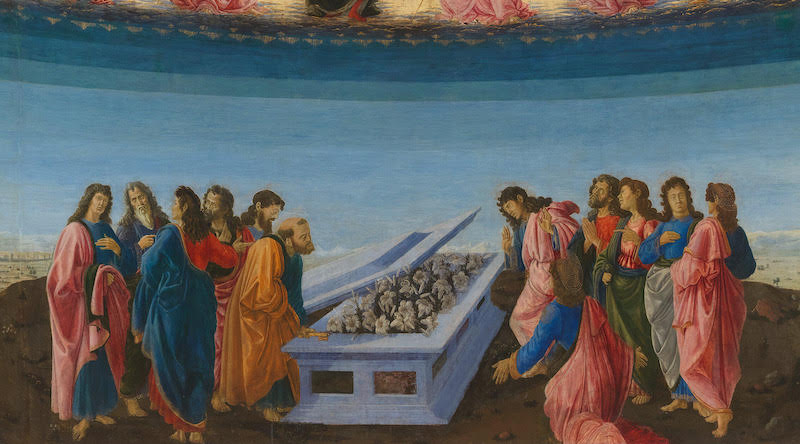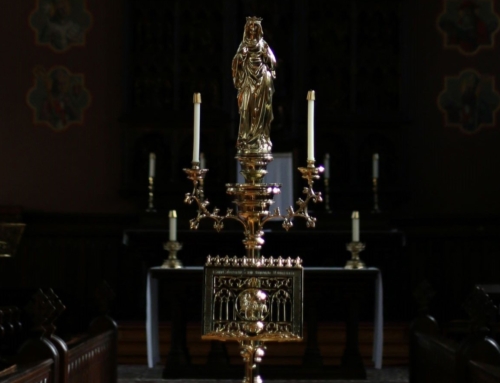As a child, I often found myself in the dismal lighting of the supermarket, yelling out that dreaded one word question that just as soon became a cry: “Mom? Mom! MOM!!”
A lost child is not a fun sight (and usually not too pleasant to listen to either). The child longs to hold on to his mother’s hand as he walks through the aisles of the Stop & Shop. And how emblematic of that child’s life! Without a parent, without a guiding principle, good decisions are much harder to make: Will it be the veggies or the Twinkies? Will it be a stable family life or carousings? How is the child to get back home, where he is supposed to be, without Mom? Without her, he might as well come to the conclusion that he must make do, Lord of the Flies-style, living the rest of his life in the supermarket: an indulgent buffet that finds its end in the dumpster out back.
So then, where is Mom? No, not your mom or my mom, but our mom. The Blessed Virgin Mary, body and soul, has been assumed into heaven to be with her ascended Son. But where exactly is that? If they have bodies, they need to be somewhere. Theories have popped up from the time Jesus left the Earth: Are they in some luminous fiery realm beyond the bounds of a Ptolemaic universe? Or perhaps in some multiverse dimension theoretically feasible in general relativity? I want to hold mom’s hand—what rocket ship do I have to build to get there?
The rocket ship of course has a name, and it is more effective than any other vessel man can build: grace. And this grace is one that touches us to our core: not as soulless statistics in the business meetings of big produce, but as persons, composed of flesh and soul, nurtured by the hands of our mother, just as the child Jesus was by Mary. This motherly swaddling of grace gives us hope against the pessimism about the materialism of our times—the human material body is neither a playground nor a cage, but a creation of God by which he is glorified. In his 1950 document Munificentissimus Deus, defining the Assumption of Mary, Pope Pius XII writes:
“Thus, while the illusory teachings of materialism and the corruption of morals that follows from these teachings threaten to extinguish the light of virtue and to ruin the lives of men by exciting discord among them, in this magnificent way all may see clearly to what a lofty goal our bodies and souls are destined” (Munificentissimus Deus, 42).
In Jesus, the one who is both God and Man, this glorified body makes sense. Of course the Incarnate God should have a body raised and glorified. But in Mary’s body, we see the total gift of God’s grace in raising and glorifying our lowly bodies to that “lofty goal” unattainable by our own efforts. All the evil which eats up our bodies—our diseases, discomforts, lusts, and addictions—will be trampled upon not by abandoning the body, but by glorifying it.
The question of the exact where of Jesus and Mary is still worth asking, but perhaps the best response is not always speculative. We can hold onto the rosary as a prayer meditating on the concrete lives of Jesus and Mary on earth and in heaven—a physical guide towards a spiritual end. Additionally, friars of our province make our vows on the feast of the Assumption, being asked by the superior, “What do you seek?” Our response is, “God’s mercy and yours.” In these words, the hope of the Assumption is professed by the Dominican—as God grants Mary to be full of grace, in both body and soul, so do we strive to participate in that fullness through the wise and guiding hand of our superiors. In this way, while still in the fluorescent glow and buzzing hum of life’s supermarket, we hold tangibly onto the hands of our mother, one on the rosary and another in obedience to our superiors, and cry “Mom! Mom! Mom!”—our mom who will always find us, and bring us back home.
✠
Image: Botticini, Assumption of the Virgin







